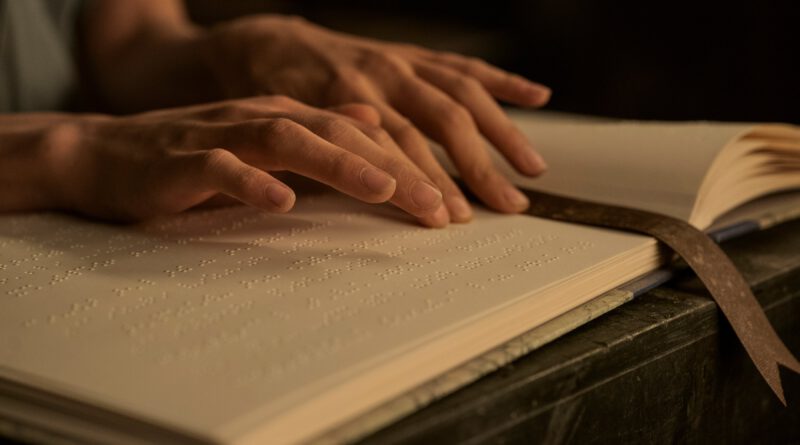The rule-breaking audio descriptions of Netflix’s ‘All the Light We Cannot See’ point to a greater accessibility triumph
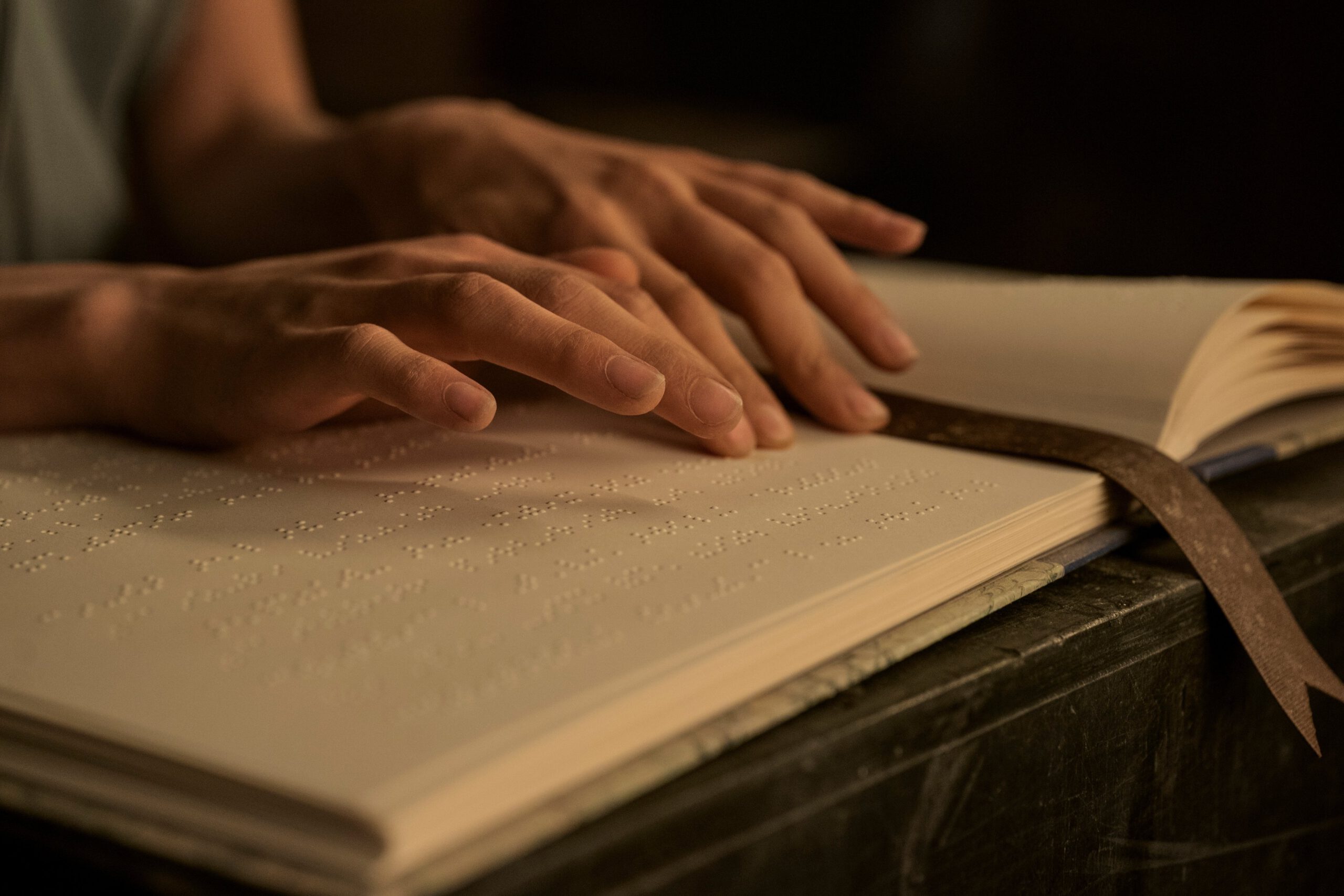
In the weeks since Netflix released the Shawn Levy-directed historical drama All the Light We Cannot See, the limited series has received mixed reviews. Mashable’s Belen Edwards said the show’s at-times “heavy-handed” dialogue was equally matched by “genuine earnestness” and phenomenal acting performances, while the Hollywood Reporter called it a “clumsy” offering that seemed to “dislike” its literary origins.
Critics may belie viewers: the show’s spent four weeks on the platform’s Top 10 list and been commended for award-winning, high-value production efforts.
But none of that really matters. To a certain extent, the show’s lasting impact won’t be about its faithfulness as an adaptation of the 2014 prizewinning novel by Anthony Doerr, or its success in depicting a WWII-doomed relationship. Because, for what the show may lack in artistic value to some reviewers, All the Light We Cannot See makes up for in its efforts to pioneer an alternative, disability-forward Hollywood.
The story playing out across the four episodes follows the lives of two star-crossed teens in Nazi-occupied France: Werner (Louis Hofmann), a German radio operator aligned with the occupying Nazi forces, and Marie-Laure (Aria Mia Loberti), a young woman clandestinely using the radio waves to send messages to resistance fighters. But as one quickly comes to learn, Marie-Laure relies on broadcast for more than obfuscation, with the radio offering a vital connection for her as a blind woman navigating 1940s France.
Netflix has billed the drama (which also stars big celebs Mark Ruffalo and Hugh Laurie) as both a compelling, emotional story of resistance and as a representative win for the disability community, even screening the show to press and disability advocates in collaboration with organizations like Guide Dogs for the Blind, the National Federation of the Blind, and the Library of Congress’ National Library Service for the Blind and Print Disabled.
It’s a sign of changing times that the blind main character, as well as the younger version of Marie-Laure, are played by actors who are themselves blind, with Loberti leading the charge and young up-and-comer Nell Sutton playing the character’s younger self.
Beyond these screen wins was a second, just as emotionally compelling, story — written by cast, crew, and advocates who created what could end up being not just a guiding model for Netflix’s original content, but an impetus for all productions to center the needs of disabled actors and disabled viewers alike.
The man behind the man behind the camera
Before getting into the nuts and bolts, Joe Strechay wants you, readers, to know he is “dashingly good-looking.” Strechay, sporting long, brown hair and a wide smile, notes this important fact while speaking to Mashable over a Zoom call the week after the new show’s premiere, sitting in front of a sparse wall as a bathroom remodel happens next door.
Strechay isn’t the show’s leading star — in fact, he’s not onscreen at all — and maybe that makes it even more important to describe his enthusiastic demeanor as we chat through the new release. As All the Light We Cannot See‘s associate producer and its blindness consultant, a rarely mentioned role on a massive production such as this, Strechay is the main point of reference, support, and input for both the show’s depiction of blindness and its treatment of its stars.
Over the last decade, Strechay has paved a path in entertainment marked by increasingly inclusive sets and more enthusiastically authentic portrayals of characters who are blind or have low-vision. “I’ve been passionate about television and films since I was young,” he told Mashable. It’s a highly personal effort for Strechay: He is also blind.
As a teenager, Strechay worked in a video rental store, “like Netflix but a building you go into, and there’d be movies on the wall and such,” he explains to the young or uninformed. He went to college, studied communications, public relations, and media, and, by the end of his first semester, had lost most of his vision.
His experience losing his sight, combined with his youthful gravitation toward movies, saw him pulled to depictions of blindness and people with disabilities on the big screen, like heartthrob Val Kilmer’s character in the 1999 romantic drama At First Sight. But as charming as Kilmer may be, Strechay couldn’t really find himself in the actor’s characterization. Many movie-watching opportunities weren’t accessible, either — screenings without engaging sound design, frequent dialogue, or audio description (a form of narration that provides descriptions of key visual elements on screen) would often lull him to sleep.
For a long while, it felt like Strechay’s movie passions and college expertise existed in separate worlds.
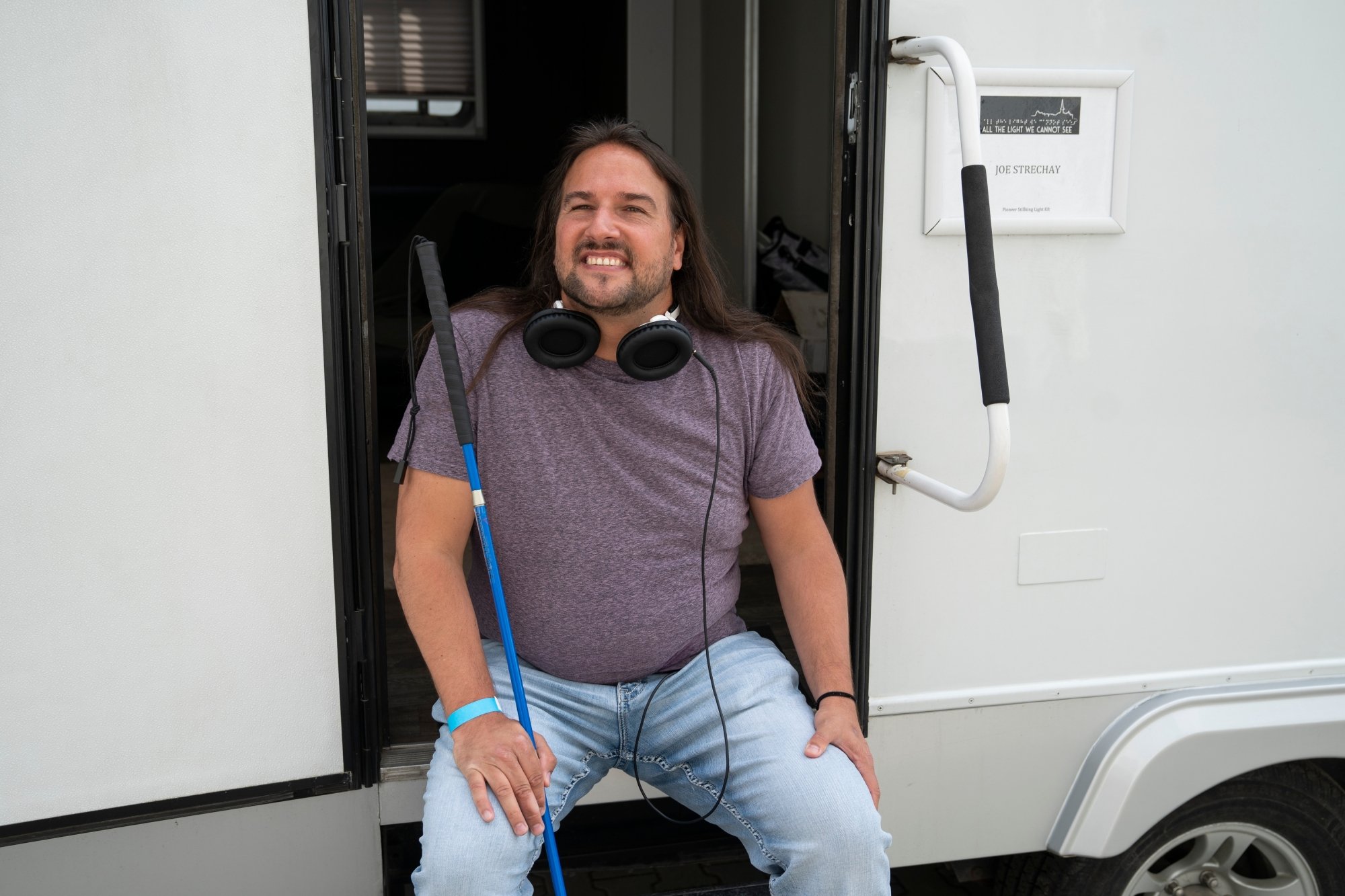
Strechay later attended graduate school at Florida State University, working in the school’s visual disabilities program, with a focus on teaching children who are blind and providing transition support for young people moving from school to work or postsecondary education. Strechay would go on to manage and teach transitional life skills to children and adults, worked in grantmaking and government offices, and acted as a disability consultant to all kinds of organizations.
At night, though, he was still thinking about movies. Strechay took up writing commentary on screen representation as a kind of passion project, building connections with actors and other creatives. Eventually, this hobby writing turned into — surprise — a gig, with him scoring roles in documentaries and commercials seeking blind or low-vision actors. Long after his work in the video store of yore, the industry was opening up to critical conversations about portraying disability on screen, and soon Strechay was hired as a consultant on USA Network’s 2009 drama Royal Pains, providing writing input for a 3-episode storyline featuring a blind character.
What followed was a series of film consultant opportunities that would later lead to a robust partnership with Netflix’s original productions team — viewers can find Strechay’s credits on Marvel’s Daredevil and the sci-fi hit The OA, both of which feature main characters who are blind but are played by sighted actors. Strechay quickly became one of the go-to guys for getting that type of representation right, working on all facets of productions, from script to set dressing to helping actors during press cycles, all while pioneering a new kind of position on set. Now, you’ll see his name appear across networks of other advocates and creatives making the world of entertainment media better for people with disabilities.
“When I first started out in this role, like with Marvel’s Daredevil, most of the people doing this work were sighted folks telling others what people who are blind should be doing. There were a few people who were blind or low-vision, but they weren’t helping in the depth I was helping — I want to impact the whole story and make sure that it’s expressed well, but also that we share it in the right way, so that the community embraces it,” he says.
While Strechay’s career began with bringing authenticity to depictions of blindness on screen — apologies to Val Kilmer — it wasn’t until All the Light We Cannot See that he got to work on both a cast of characters and a team of talent made up of people who are blind.
We’re definitely pushing that envelope and crossing some lines.
At the time of the show’s release, Strechay spoke extensively about the unique accessibility efforts made on this set, marking another first in the producer’s robust career of “firsts.” He listed them out for Mashable, noting the efforts to ensure historical accuracy when it came to people who were blind and living in the 1940s — from the types of canes used (standard white canes were developed and distributed in the 1930s) to how Loberti’s character reads braille (the typical braille typewriter we know wasn’t developed until the 1950s, Strechay explained). Strechay also noted the many accommodations made for the actors, like how the crew marked their spots in scenes and the various methods actors used to memorize lines (from braille to audio memorization), as well as the process of distributing guides to the production crew on how to speak about and portray disabilities.
Even before shooting, Strechay helped create accessible audition processes, scripts, and casting environments during the show’s development, in collaboration with the director, the production team, and outside organizations like the American Council of the Blind, the National Federation of the Blind, and RespectAbility. During shooting, Strechay also consulted a personal network of experts and advocates under nondisclosure agreements, and utilized an assistant, Cara Lee Hrdlitschka, who described actors’ movements and scenes to him during shooting.
“When I give advice, it’s not just my thoughts,” Strechay explained. “It’s the people I’ve worked with.” Strechay noted another project, with AppleTV+, supporting Jason Momoa in his role in the 2019 sci-fi action show See. Strechay sought out Erik Weihenmayer, the first blind person to summit Everest, for his advice on the stunts. “If I can’t do something, I want to make sure other folks from the community are demonstrating it in some way. We’re creating art, but I also want to ensure blindness is respected,” he said.
Netflix’s “rule-breaking” accessibility efforts
Strechay and his team’s care in helping Loberti and Sutton adds to the tireless efforts of advocates holding companies like Netflix accountable to viewers who are blind and generating accessible products and appropriately representative stories of people with disabilities.
To this end, All the Light We Cannot See incorporates some of the platform’s most detailed audio descriptions in the streamer’s history, pushing the industry-established boundaries of what audio description sounds like through narration intended to build the accessibility feature directly into the world itself.
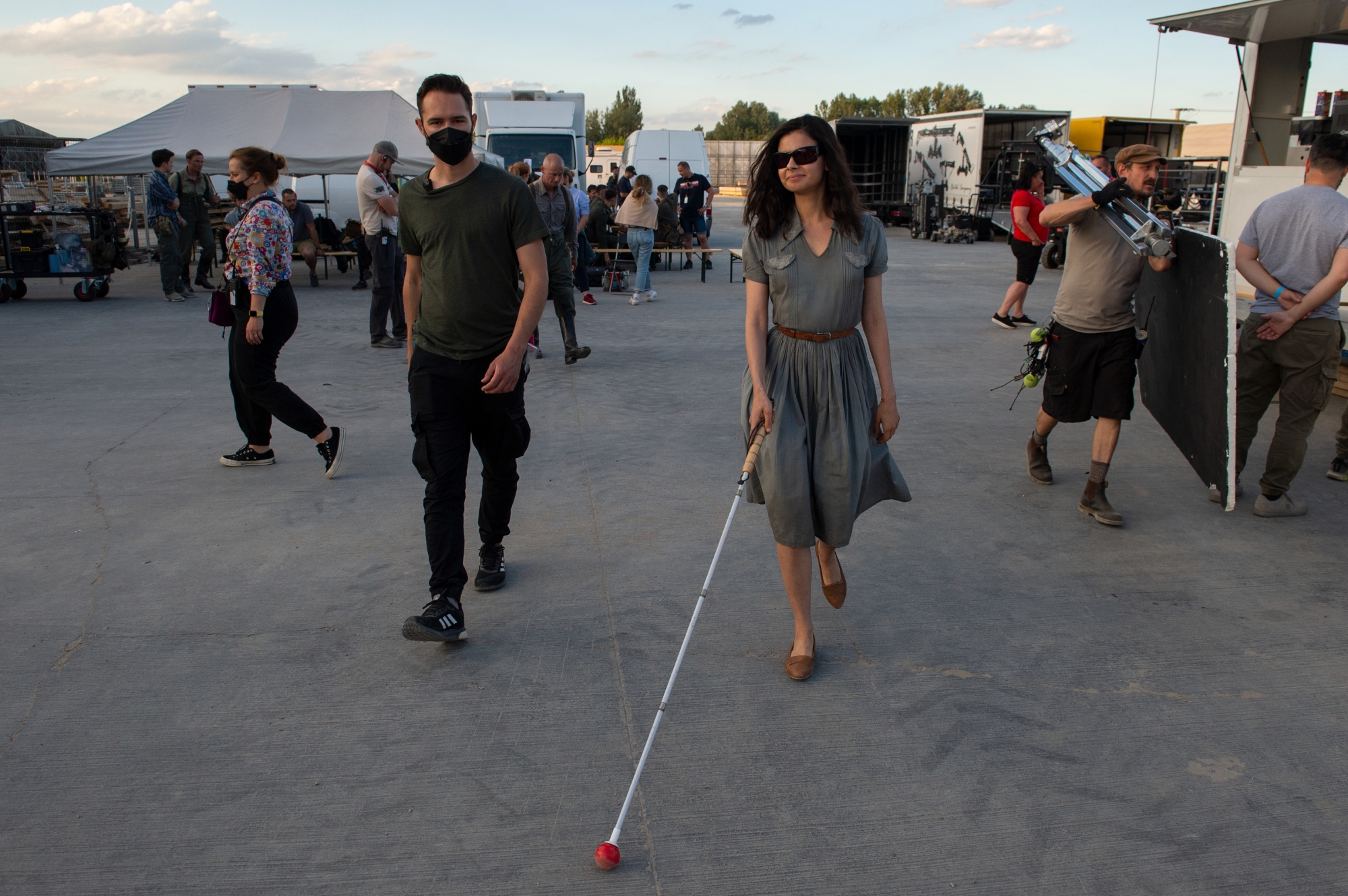
The show’s pre-airing campaign included a first-of-its-kind introductory video for viewers who are blind, released ahead of its premiere. In the 11-minute video, Loberti offers descriptions of her fellow characters’ appearances and the cast’s wardrobes and movement styles, along with explanations of the settings, locations, and other visual details, priming viewers for the show they’re about to dive into. Other exclusive, behind-the-scenes clips were released with added audio description, as well.
“I want to have the same experience that everyone else has while watching a show or film. Audio description provides that equality. It shouldn’t be a bonus, it should be the norm,” Strechay wrote in a Netflix announcement.
The episodic audio descriptions carry nearly just as much detail as the featurette, Strechay explained, providing more vivid explanations of scenes and even narrating alongside or over character dialogue to include cinematic elements — not a standard practice of most audio descriptions. It’s all intended to keep viewers who are blind and low-vision immersed within the story.
“I love the detail,” Strechay said. “We’re definitely pushing that envelope and crossing some lines. Most productions don’t get to impact the audio description. We don’t often get to hear about the costumes. We don’t get to hear as much about the set, because they’re trying to fit in such little amounts in between dialogue. We broke some rules. There are times where there’s a little more detail than the rules would typically allow, but my favorite line is ‘Blame Joe.’ You can blame Joe anytime people say we’re breaking rules in regards to audio description.”
The streaming world makes a bid for inclusivity
Streaming platforms have sidled their way into a larger entertainment and media industry that’s long been contending with slow-to-evolve standards of accessibility, although rates of adoption have skyrocketed.
After a lawsuit filed by the National Association of the Deaf in 2010, Netflix pledged to add subtitled content to all of its online content by 2012. Since then, Netflix has added caption customizability to its content and continues to expand its accessibility offerings and product team, now headed by Heather Dowdy, a CODA (Child of a Deaf Adult) and fluent ASL speaker.
Captioning has become one of several barometers of a platform’s functionality and, for some, site and content success. The general public voices its opinions about that, too, as captions and foreign language subtitles have become a vital part of streaming (and general viewing) culture in recent years. Audio descriptions, however, remain a less-discussed aspect of streaming accessibility.
In 2016, Netflix settled a lawsuit with a coalition of advocates for people who are blind (led by the American Council of the Blind) surrounding its site’s accessibility. In the settlement, the company agreed to add audio description to its original scripted content, request audio description tracks in all new contracts with streaming content providers, make an effort to obtain audio descriptions to already existing third-party content, and make its website and mobile applications accessible to individuals who are blind and use screen-reading software.
The year prior, Netflix had become the first streaming service to offer audio description options on its content, debuting the service with Daredevil in 2015.
The American Council of the Blind hosts the fruits of this labor within its Audio Description Project, an extensive collection of master lists that dive into every streaming site’s audio description efforts, and still cites Netflix’s efforts as setting the stage for current streaming providers’ accessibility contracts.
Netflix users can now browse through audio-described content on the website itself, another product of the settlement, and audio descriptions are available for every Netflix original show and film in more than 50 languages. Netflix explained to Mashable that the company is continuing to expand its language offerings, as well, including recent commitment to Spanish, Portuguese, Hindi, and French descriptions.
According to the American Council for the Blind, 11 percent of audio-described titles on the site were for young children; 19 percent for older children under 13; 20 percent for teens; and 50 percent for adults. The vast majority (540) of titles are documentaries, with kids and family content, dramas, and comedies following. The organization reports that Netflix adds 24 new audio described titles per month on average.
“At Netflix, we believe entertainment is for everyone and incredible stories should be enjoyed by all of our members, regardless of language, device, connectivity, or ability,” the company said. “We’re continuously striving to make our service accessible and inclusive for everyone — no matter who you are, where you live, and what you love to watch.”
Mainstream efforts for audio description date to the 1980s, with the work of Dr. Margaret Pfanstiehl and her husband, Cody Pfanstiehl. Independent efforts by men like Chet Avery and Gregory Frazier in the 1960s and 1970s laid even earlier groundwork for the tool’s introduction, the American Council for the Blind explains. By 2001, federal guidelines made audio description a requirement for all film, video, multimedia, and information technology produced or procured by federal agencies, and in 2010 President Barack Obama signed into law the 21st Century Communications & Video Accessibility Act, which mandated expansion of descriptions for broadcast and cable channels.
Audio descriptions are now produced by business, consumer, or volunteer organizations, and are based on various standards developed by advocacy organizations like the American Council for the Blind or accessibility compliance companies like 3PlayMedia. In 2020, the FCC’s Disability Advisory Committee issued its own recommendations for audio descriptions. Just like the guidelines creators follow, the content of audio descriptions can vary.
In order to “improve the narration and style of audio description to be as detailed as possible so that blind and low-vision audiences don’t miss out on any exciting moments happening in a film or series,” the company explained, Netflix has updated its own audio-description guidelines with a more robust benchmark for its partners, including new suggestions for describing character appearance and including cultural references and slang.
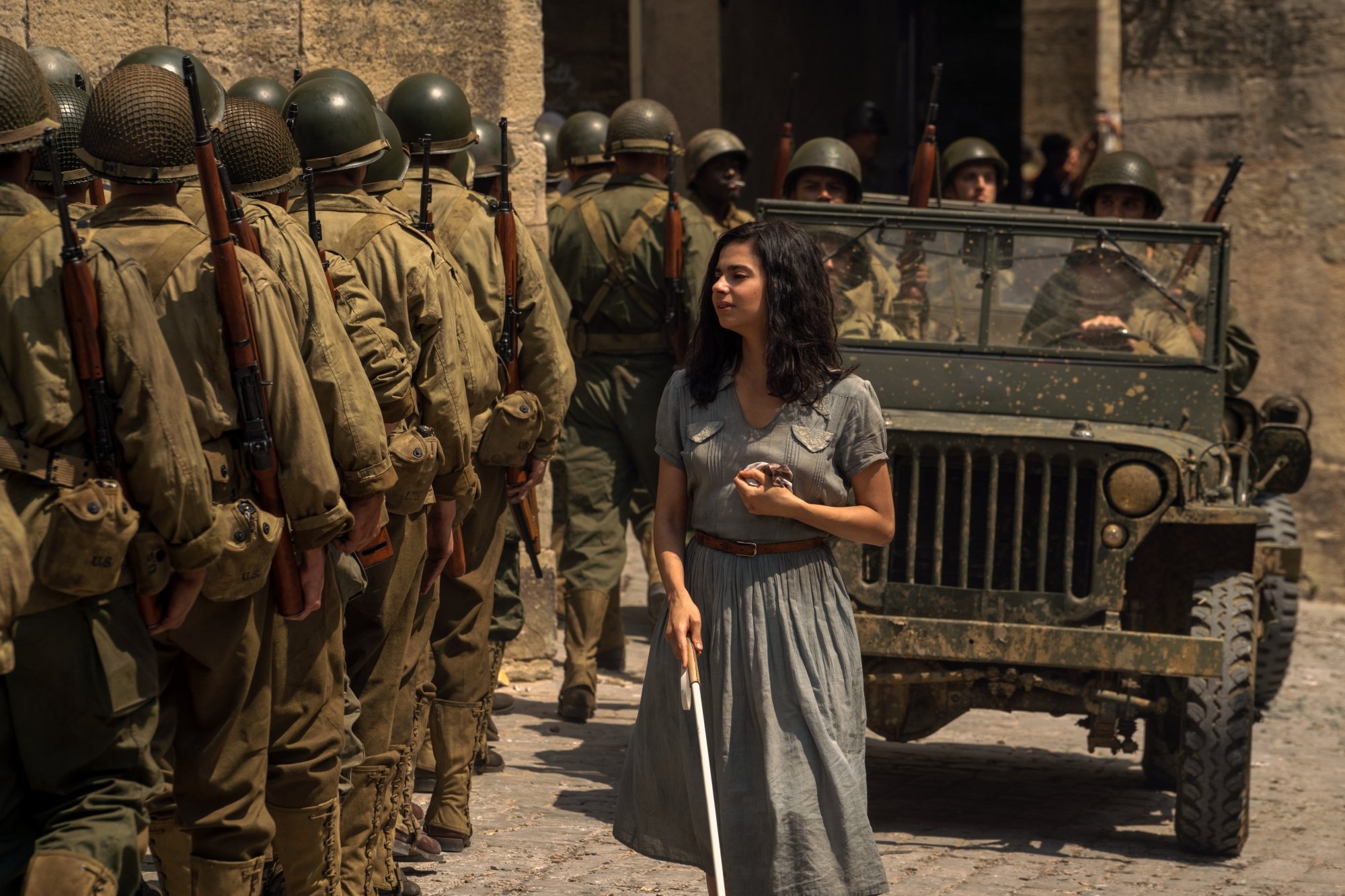
For All the Light We Cannot See, Netflix brought in partners within the blind community, Strechay, and Loberti to provide feedback on the audio description’s stylistic writing and voicing, which was created (as is typical) by an external accessibility partner. The English descriptions are voiced by Fern Lulham, a broadcaster and voiceover artist who is also an advocate for the blind community. Italian, German, and Spanish audio descriptions were also voiced by actors who are blind.
“I think we’re going someplace beautiful with audio description,” said Strechay. But, just like the relatively new and ubiquitous call for better captioning, there’s still room to grow. “Personally, I would love to have different levels of audio description and to be able to control it, because not all consumers want the same thing,” he added. “Speaking for [myself]… I think we are definitely a standard of what could be done and how it can be done well. And I think the proof is in our product.”
In November, a day after Strechay spoke to Mashable, Netflix was awarded the Audio Description People’s Choice Award for its original show Wednesday, as well as the AD Game Changer: Innovation Award for its overall audio descriptions at the American Council of the Blind’s 2023 Audio Description Awards Gala.
Director Shawn Levy appeared during the event to discuss All the Light We Cannot See, too: “People who are blind or have low-vision deserve access to media, yet only a small percentage of all media is required to be audio described. Without audio descriptions, we are inherently excluding a huge percentage of society from art, culture, entertainment, storytelling, and education. Access is a human right, and we need to push for more audio description.” Levy closed out the spot discussing his production’s specific efforts to create a new standard for audio description, “Were we perfect? Probably not. We may have bent a few rules of audio description. But definitely blame Joe Strechay for that. Let me say that name again: Joe Strechay. His fault…”
